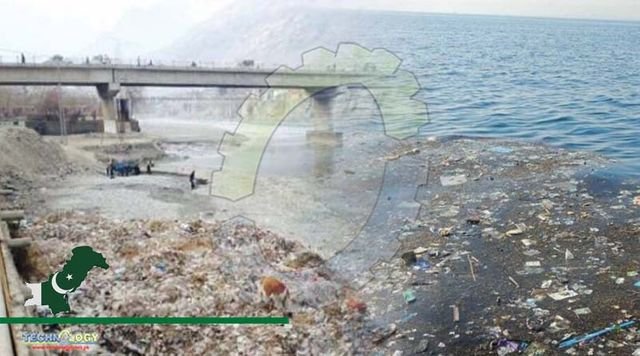Karachi’s dirty water flows to the ocean untreated ,The megapolis of over 20 million generates 472 million gallons per day (MGD) of sewage water. Of this, a little over 10 percent or 55 MGD is treated. With only two of its three water treatment plants functional, Karachi’s capacity to treat sewage water, as per the Karachi Water and Sewerage Board (KWSB) is limited to 150 MGD.

Karachi is amongst the many coastal cities that severely lag behind in treating their oceans well. Such global concerns will be under discussion at the five-day UN ocean conference in Portugal’s capital Lisbon that started a day earlier. The mission is to lay strong emphasis on managing oceans, adapting green technology and innovative uses of marine resources. Some other considerations include the threats of ocean acidification, marine litter and pollution, and the loss of habitats and biodiversity. “Karachi has three sewage treatment plants, one of which was built in the 1800s during the British colonial rule. It is known as Gutter Baghicha (TP-1),” says Moazzam Khan, WWF’s Technical Advisor on Marine Fisheries. “The British designed it with the intention to use the treated water from here for vegetable farming.” Gutter Baghicha is one of the two functional water sewage plants in Karachi with the capacity to treat 51 MGD. However, it only treats 20 MGD. The other one is the Mauripur treatment plant (TP-3). It was built with an operational capacity to treat 54 MGD but treats only 35 MGD. The third plant (TP-2) at the Mehmoodabad area, which was ‘officially’ constructed before the Mauripur treatement plant, remains inoperational.
“The majority of the land on these plants has been encroached,” Khan tells Aaj Digital. In the case of Gutter Baghicha, a map of the Karachi municipality from 1892 shows it to be spread over 1,016 kms. It has been reduced to less than half the size as slums have cropped up while city authorities have alloted the land to Sindh Industrial Trading Estate (SITE), housing societies and others. The focus has to be brought back to treating sewage water instead of carving out pieces of the land to be alloted for personal gains. It has led to inefficiency in treating polluted water, adding to the city’s marine problem. “Almost 500 million gallon water from the city goes into the sea,” said Khan. The official figures present on the water board’s website are 472 MGD. According to Khan, approximately 300 million gallon of untreated water enters the sea through the Lyari River and another 200 million gallon of polluted water flows through the Malir River. “This untreated water then gets soaked into Karachi’s coasts and heavily damages the environment.”
Apart from the water used by domestic consumers, Karachi has eight industrial areas. The water from the factories on these industrial sites goes untreated into the sea, adds Khan. Liquid waste treatment is only one part of the problem. The lack of solid waste management is another contributor to oceanic pollution. “The Sindh government submitted its statement to the Supreme Court-appointed judicial commission led by Justice Hani Muslim, stating that 12,000 to 14,000 tonnes of solid waste is generated in Karachi. Of this, 8,000 tonnes is picked up by the authorities,” said Khan. Now almost four years ahead, Khan believes that the figures must be much higher. According to a January 2022 report, Karachi generates more than 16,500 tonnes of solid waste.
This means the Pakistan’s largest city treats less than 50 per cent of its solid waste. Harmful gases and particles that end up in the water body are a threat to marine life and can lead to their extinction. Khan believes that marine pollution starts from the land and it has to be contained on the land by people at the individual level. “Pollutants should be reduced at personal levels,” said Khan. He cited a traditional technique used in the past where soak pits were a crucial part of a house’s design but they are nowhere to be found today. They used to act as a filter releasing only clear and non-harmful water into the ground with the solid waste settling at the top and the water is soaked by the ground.
Source: This news is originally published by aaj.tv